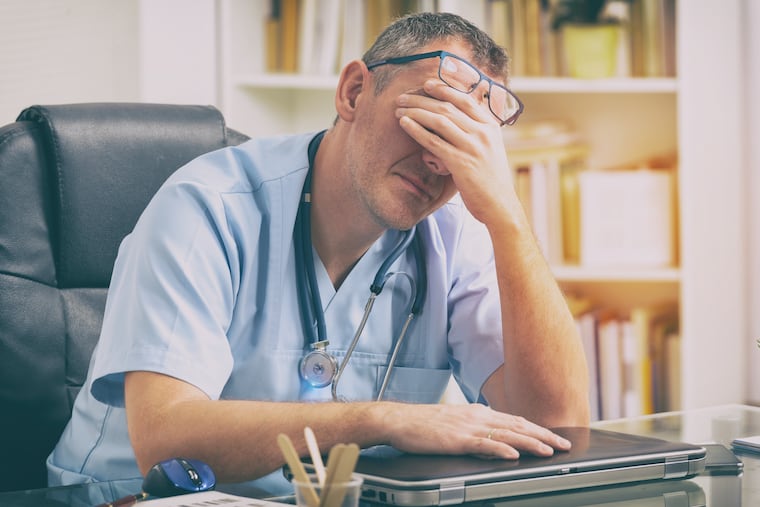Long shifts for doctors don’t hurt their sleep or your health | Opinion
Two studies asked whether doctors with longer shifts slept less and whether their patients were less safe.The answers? No and no.

Thirty-five years ago this month, an 18-year-old college freshman named Libby Zion died at the New York Hospital while under the care of medical residents her father would later claim were too tired.
Investigations and litigation followed, but the enduring outcome has been a debate about medical training’s traditionally long hours. Many people believe it’s absurd and dangerous to think that resident physicians — those new medical school graduates who staff America’s teaching hospitals — can safely care for patients after working 24 or more hours straight. After all, we don’t let airline pilots fly under those conditions. Aren’t the long hours of residency just preserving traditions that are themselves tired?
The medical community has countered that patients don’t want their doctors to be clock-watchers, that patients need doctors who stay with them through the acute periods of their illness, and that reduced shift lengths risk a future of under-trained doctors. And though the freshly rested pilot swapped in after a few hours doesn’t need to know anything about the passengers in each of the seats, the swapped in doctor needs to know a lot about the patients in each of the beds. Shorter shifts means more patient handoffs, and more patient handoffs means more errors.
Last week, the New England Journal of Medicine published two papers from our iCOMPARE study, the largest ever National Institutes of Health-funded trial of resident work hours. These studies asked whether doctors with longer shifts slept less and whether their patients were less safe.
The answer is no and no.
Before revealing the details, it’s important to understand that stringent rules already dictate how long these young doctors can work — no more than 80 hours a week on average. That may seem alarming against a convention of 40-hour work weeks, but it balances the reality of 24/7 clinical care, education, and rest in a way comfortable to most experts. At issue has been shift lengths within those 80 hours. When the iCOMPARE study was conducted, first-year residents were limited to 16-hour shifts. Some medical leaders worried that those seemingly long shifts weren’t long enough to best care for patients today or train doctors for the future.
The iCOMPARE trial was a yearlong experiment involving 63 internal medicine residency programs and hundreds of thousands of patients around the U.S. Half the programs followed the existing rules about resident duty hours that included restrictions on the lengths of shifts and the time required between shifts. The other half didn’t face those shift-length rules.
Here's what the study found: First, the patients cared for by the doctors with the longer shifts did no worse than those cared for by the doctors with the shorter shifts. That’s reassuring.
Second, the first-year residents (interns) in the programs with the longer allowable shifts didn’t sleep any less. Interns in both groups averaged about 7 hours of sleep a day — the amount recommended for alertness and health in everyone. Yes, interns coming off long shifts got less sleep that day, and were more fatigued the next morning — that’s natural and to be expected. But we found they made up for those acute sleep losses on other days.
These results sit alongside those from another paper from the same study showing that the residents in both groups had similar educational outcomes as well. One group didn’t learn less than the other. That’s reassuring, too.
What do we take away from this? At the most basic level, this study reveals that empirical research can inform our approach to training doctors. It’s a funny thing, but if someone develops a new drug or medical device, we all expect that the drug or device will be carefully tested to make sure it is safe and effective. But when we develop training programs for the doctors who will prescribe those things, we don’t subject those programs to the same standards. This study, and some others like it, elevate our evidentiary standards for medical education.
In the meantime, we have good news for the rest of us. If you are sick enough to need to be in a hospital, you’re often advised that you’ll do best in an academic teaching hospital. But if you were worried that the long shifts of those young doctors might make the care more risky, or interfere with their sleep, now you can be reassured they don’t.
David A. Asch, M.D., and Judy A. Shea, Ph.D., are professors at the University of Pennsylvania, and Sanjay V. Desai, M.D. is associate professor at Johns Hopkins University. All three are investigators of the iCOMPARE study.